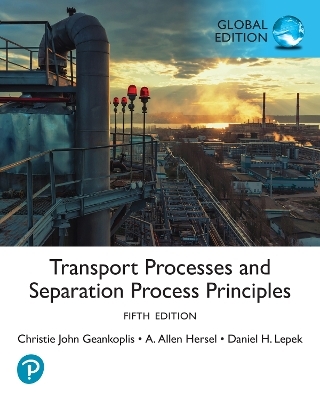
Biodegradation of Pesticides
Kluwer Academic / Plenum Publishers (Verlag)
978-0-306-40857-1 (ISBN)
- Titel ist leider vergriffen;
keine Neuauflage - Artikel merken
A substance is said to be biodegraded to an environmentally acceptable extent when environmentally undesirable properties are lost. Loss of some characteristic function or property of substance by biodegradation may be referred to as biological transformation.
I Biodegradation of Pesticides: Principles and Mechanisms.- 1 Degradation of Pesticides by Animals.- 1.1. Introduction.- 1.2. Phase I Metabolism.- 1.2.1. Dehydrohalogenation and Dehalogenation.- 1.2.2. Desulfuration.- 1.2.3. Epoxidation.- 1.2.4. Hydrolysis.- 1.2.5. Hydroxylation.- 1.2.6. Oxidation-Reduction Reactions.- 1.2.7. Isomerization.- 1.2.8. Nitrosation.- 1.3. Phase II Metabolism.- 1.3.1. Glycoside Formation.- 1.3.2. Sulfoconjugation.- 1.3.3. Other Conjugation Reactions.- 1.4. Conclusion.- References.- 2 Pesticide Metabolism in Plants: Reactions and Mechanisms.- 2.1. Introduction.- 2.2. Pesticide Metabolism in Plants.- 2.2.1. Absorption.- 2.2.2. Translocation and Distribution.- 2.2.3. Metabolism.- 2.3. Degradation Reactions of Pesticides in Plants.- 2.3.1. Oxidation.- 2.3.2. Reduction.- 2.3.3. Hydrolysis.- 2.3.4. Conjugation.- 2.3.5. Bound or Insoluble Residues.- 2.4. Conclusion.- References.- 3 Degradation of Pesticides in the Environment by Microorganisms and Sunlight.- 3.1. Introduction.- 3.2. Characteristics of Microbial Metabolism.- 3.2.1. Enzymatic Degradation.- 3.2.2. Criteria for Distinguishing One Type of Metabolism from Another.- 3.3. Commonly Occurring Metabolic Processes in Microorganisms.- 3.3.1. Hydrolytic Processes.- 3.3.2. Reductive Systems.- 3.3.3. Oxidative Reactions.- 3.4. Other Metabolic Reactions Related to Pesticide Degradation.- 3.4.1. Dehydrochlorination.- 3.4.2. Isomerization.- 3.4.3. Synthetic Metabolism.- 3.4.4. Polymerization.- 3.5. Degradation by Sunlight and Other Physical Factors.- 3.5.1. Hydrolysis: Nucleophilic Reaction.- 3.5.2. Dehalogenation.- 3.5.3. Oxidation.- 3.5.4. Isomerization and Polymerization.- 3.6. Conclusion.- References.- II Application of the Principles of Biodegrada Tion of Pesticides.- 4 Microbial Degradation of Pesticides in Tropical Soils.- 4.1. Introduction.- 4.2. Residues in Soil.- 4.3. Microbial Degradation.- 4.3.1. Chlorinated Hydrocarbon Insecticides.- 4.3.2. Organophosphorous Insecticides.- 4.3.3. Carbamate Insecticides.- 4.3.4. Fungicides.- 4.4. Factors Influencing Persistence of Pesticides.- 4.4.1. Soil Moisture.- 4.4.2. Organic Matter.- 4.4.3. Redox Conditions.- 4.4.4. Soil Acidity.- 4.4.5. Soil Temperature.- 4.4.6. Sorption-Desorption.- 4.4.7. Mineral Constituents.- 4.4.8. Pesticide Combinations.- 4.5. Conclusion.- References.- 5 Persistence and Biodegradation of Herbicides.- 5.1. Introduction.- 5.2. Persistence.- 5.3. Degradation.- 5.3.1. Biodegradation.- 5.3.2. Nonbiodegradation.- 5.4. Man's Activities.- 5.5. Conclusion.- References.- 6 Biodegradation of Agricultural Fungicides.- 6.1. Introduction.- 6.2. Toxicity of Fungicides to Nontarget Organisms.- 6.3. Stability of Fungicides.- 6.4. Biodegradation of Selected Fungicides.- 6.4.1. Triphenyltins.- 6.4.2. PCNB (Terraclor, Quintozene).- 6.4.3. Dithiocarbamates.- 6.4.4. Substituted Phthalimides.- 6.4.5. Chloroneb.- 6.4.6. Benzimidazoles.- 6.5. Effect of Fungicides on Pesticide Degradation.- 6.6. Summary and Conclusions.- References.- 7 Biodegradable Insecticides: Their Application in Forestry.- 7.1. Introduction.- 7.2. Need for Insecticides.- 7.3. Use of DDT: 1945-1974.- 7.4. Alternatives to DDT and Other Insecticides.- 7.5. Insecticide Evaluation Research.- 7.6. Testing Protocol.- 7.6.1. Laboratory Testing and Evaluation.- 7.6.2. Bioassay Studies.- 7.6.3. Individual Tree Evaluations.- 7.6.4. Field Testing.- 7.7. Systemic Insecticides.- 7.8. Trends in Forest Pest Management.- 7.9. Conclusions.- References.- 8 The Use of Biodegradable Pesticides in Public Health Entomology.- 8.1. Introduction.- 8.2. The Nature and Diversity of Arthropod-Borne Disease.- 8.3. Insecticides: The Recent Past.- 8.3.1. Mosquito Control in the United States.- 8.3.2. Malaria Control.- 8.4. Integrated Pest and Vector Management.- 8.5. Source Reduction.- 8.5.1. Salt Marsh Mosquitoes.- 8.5.2. Aedes vexons.- 8.5.3. Aedes aegypti.- 8.5.4. Aedes triseriatus.- 8.6. Mass-Produced Biocontrol Agents.- 8.6.1. Larvivorous Fish.- 8.6.2. Insectan Predators.- 8.6.3. Bacterial Pathogens.- 8.6.4. Fungi.- 8.6.5. Protozoa.- 8.6.6. Nematodes.- 8.7. Insecticides for Mosquito Control.- 8.7.1. Conventional Larvicides.- 8.7.2. Synthetic Pyrethroids.- 8.7.3. Insect Growth Regulators.- 8.8. The Need to Apply Existing Knowledge.- References.- 9 Pesticides for Stored Products.- 9.1. Introduction.- 9.2. Fumigants.- 9.3. Protectants.- 9.4. Alternative Chemical Control Techniques.- 9.4.1. Compounds That Affect Insect Development.- 9.4.2. Compounds That Affect Insect Behavior.- 9.5. Conclusion.- References.- 10 Application of Biodegradable Pesticides in India.- 10.1. Introduction.- 10.2. The Pesticide Industry in India.- 10.2.1. Consumption of Pesticides in India.- 10.2.2. Development of Process Technology within the Country.- 10.3. Biodegradation of Pesticides by Microorganisms.- 10.4. Insecticides of Plant Origin.- 10.5. Farm Management and Metabolism.- 10.5.1. Organophosphorus Compounds.- 10.5.2. Organochlorine Insecticides.- 10.5.3. Carbamate Compounds.- 10.5.4. Fungicides, Herbicides, and Fumigants.- 10.6. Postharvest Storage.- 10.7. Bioefficacy and Residue Effects of Pesticides.- 10.8. Pesticides in Forestry.- 10.9. Safety Evaluation Studies.- 10.9.1. Toxicity to Fish.- 10.9.2. Toxicity to Wildlife.- 10.9.3. Toxicity to Animals.- 10.9.4. Toxicity to Man.- 10.10. Future Perspectives.- References.
| Zusatzinfo | biography |
|---|---|
| Verlagsort | Dordrecht |
| Sprache | englisch |
| Gewicht | 600 g |
| Themenwelt | Technik ► Umwelttechnik / Biotechnologie |
| ISBN-10 | 0-306-40857-0 / 0306408570 |
| ISBN-13 | 978-0-306-40857-1 / 9780306408571 |
| Zustand | Neuware |
| Haben Sie eine Frage zum Produkt? |
aus dem Bereich


